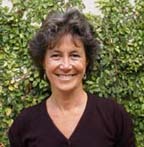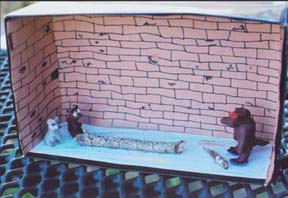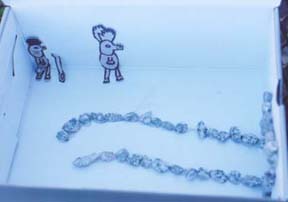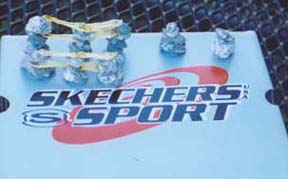 |
All of this exposure to the first-grade classroom has had a lasting effect on Leslie’s books, not just providing a setting but also making the books very curriculum friendly. Albert’s Field Trip was a direct result of a class field trip. Ms. Klingensmith (Shelly) can be seen (in her Pleasant Valley/rabbit persona) working with the first-graders in Albert’s Birthday. Shelly created these materials and used them in her classroom with great success. |
I believe this enthusiasm was evident for two important reasons. First of all the children love to use their hands and create structures to share with their peers. This process involves kinesthetic and tactile learning. Studies have shown that perhaps up to 65% of our youngsters in the elementary school learn best using these two modalities, and yet we have precious few assignments that ask the students to use them. (You can read more about learning styles by going to the following website: http://www.learningstyles.net) Second, I believe the children use higher levels of thinking when they make models. They must justify every part of the model to the story they just finished reading. With this oral explanation and accountability they are really being asked to do some sophisticated higher level thinking. Bloom's Taxonomy tells us that asking the kids to evaluate, synthesize, analyze, and apply what they know requires higher level thinking skills than just understanding basic knowledge. Most tests are made up 95% of questions at the lowest levels of thinking; recall. Making the models had the children selecting and supporting their materials and arrangements, assembling a construction, and interpreting a story by employing materials. Brain skills were building by the minute! (Read more about Bloom's Taxonomy at http://cft.vanderbilt.edu/teaching-guides/pedagogical/blooms-taxonomy and http://projects.coe.uga.edu/epltt/index.php?title=Bloom%27s_Taxonomy) Model making is a win/win kind of assignment. The children love doing it. They use kinesthetic and tactile learning modalities, which are normally ignored in the schools. They use higher level thinking skills and so their intellectual behavior is being stretched. After assigning models to just two of my reading groups, now the other two want their turn. So that's the next assignment. It feels good to see enthusiastic learning going on in my classroom. It feels even better knowing that it is based on wise assignment choices that support higher levels of thinking and under utilized modalities. Take a look at what the children created from the books The Borrowers by Mary Norton and The Dark Portal by Robin Jarvis. They used shoeboxes and whatever they could find around their houses to build the models. They shared their models orally with the class and suggested others might enjoy reading the books. What an exciting project this was! Ryan's model from The Borrowers. Alex's model from The Dark Portal. Billy's model from The Dark Portal. Mallory's model from The Borrowers. Mallory's model from The Borrowers. Mallory's model from The Borrowers.
Model Making
By Shelly Lyon
As teachers we are often so busy with all our many pieces of curriculum and other school responsibilities that we sometimes forget that the WAY we teach is equally if not MORE important than what we teach. I was reminded of this fact when I assigned a model-making project to two of my reading groups as a final project, rather than a book report. They jumped in to work enthusiastically. There was an excitement in sharing the book that I have not seen present in the process of report writing before.






Click here to download the PDF version of Shelly's text.